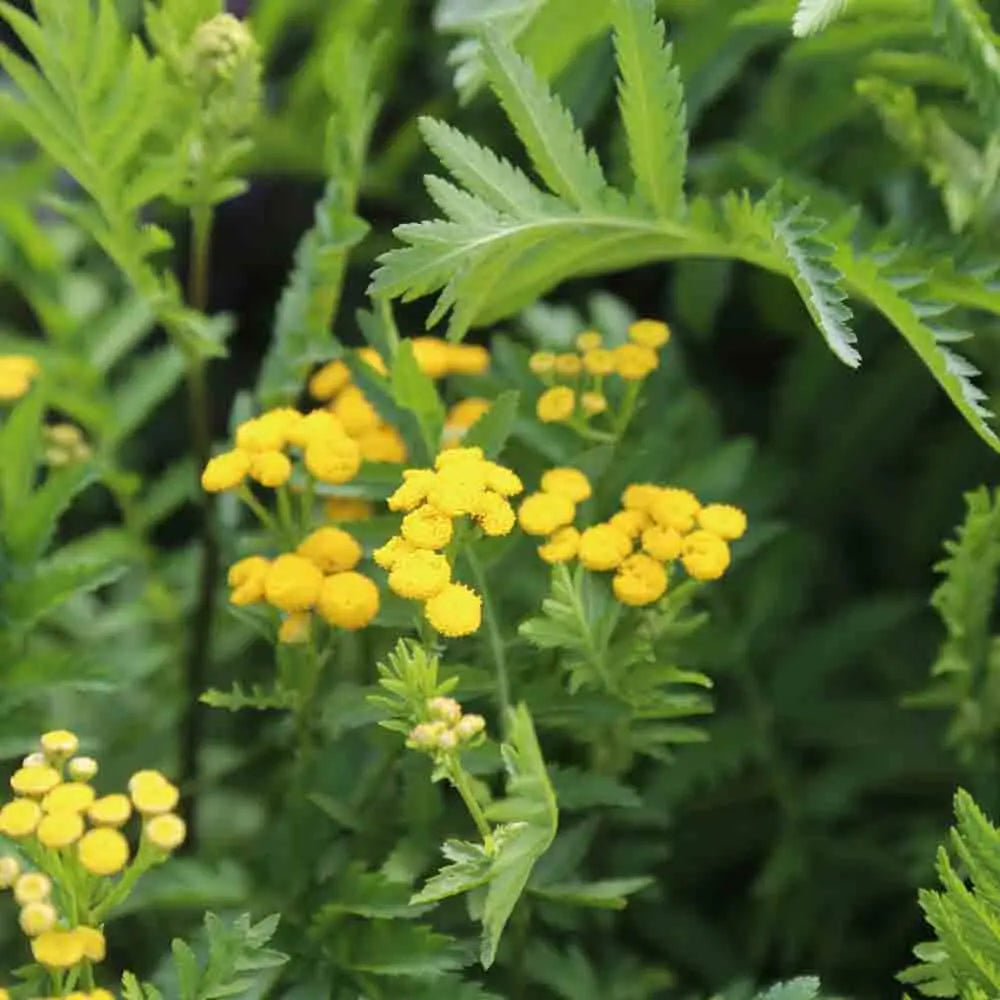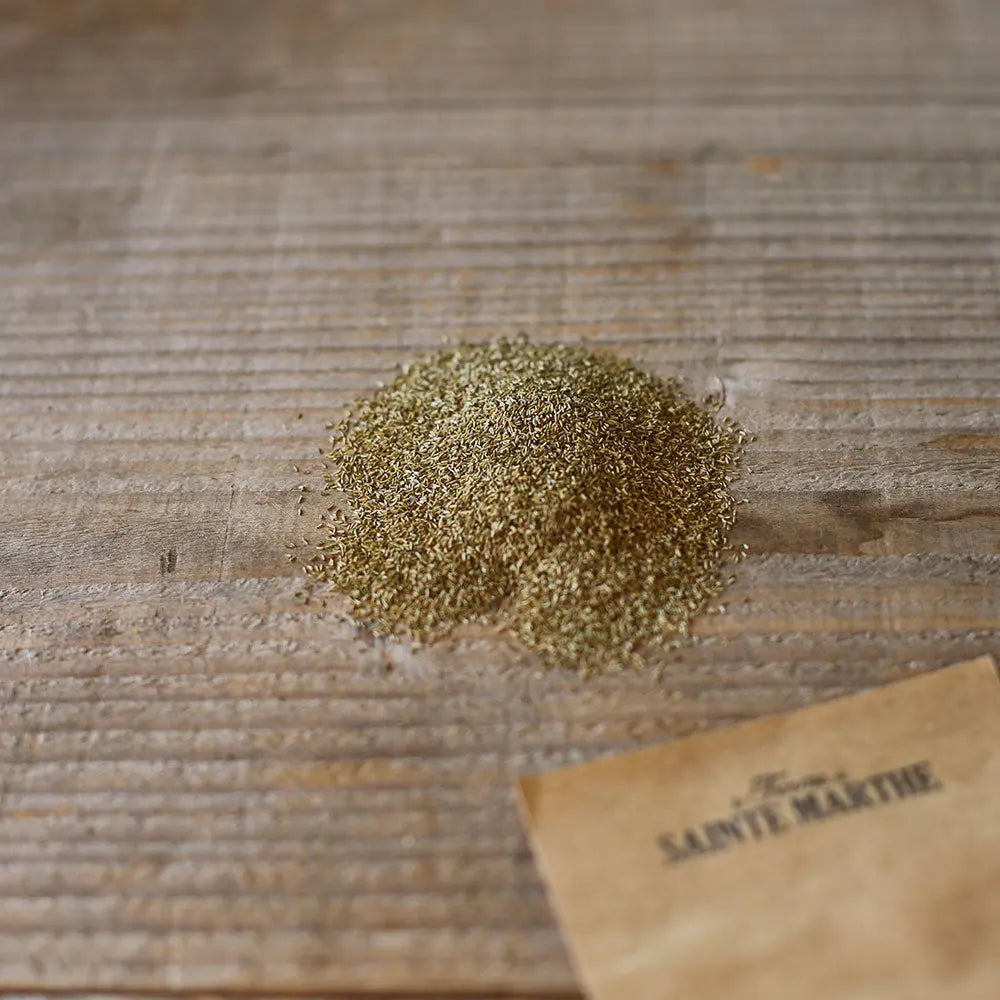TANSY NT
Tanacetum vulgare
Tansy is a perennial plant with an intense yellow color that repels insect pests (aphids, ants, sawflies, mosquitoes, fleas, ticks, etc.) and is a honey plant that feeds pollinators (wasps, ladybugs, lacewings, hoverflies, etc.). Cultivated since the Middle Ages in monasteries for its effective scent to repel parasites and to protect meat from flies and other parasites. Used as a soil improver to be buried 3 to 4 months after sowing, it cleans the soil. Use sparingly in cooking, as a condiment. A few fragments can be used to flavor desserts, cakes, liqueurs, salads, or sauces. Tansy as a repellent plant in the vegetable garden Tansy has a repellent action against many insects and pests: against aphids, ants, sawflies, flea beetles, cabbage whites, root mites, gastropods, against mildew or even whiteflies. Generally speaking, you can immerse 30g of dried plant or 300g of fresh plant in 1 L of water in cold water, then bring to a boil and let it infuse for 10 minutes. Then dilute 20 cl for 1 L for spraying. For root mites, use 30g of fresh plant or 3g of dried plant in 1 L of water for 24 hours. Boil for 20 minutes. Filter then use this pure preparation on the roots. Against slugs and snails, you can use a maceration (also called mother tincture of Tansy) of 20% weight of fresh, chopped plant for 80% weight of 60% alcohol for 21 days away from light and under the heating effect of the sun. Filter, then dilute in water at a rate of 15cl for 1 L of water and then spray in the morning. Against Colorado beetles, we recommend mixing 50g of fresh leaves in 1L of water. Filter and water the potatoes immediately to limit egg-laying and the development of larvae. This solution should be used in early spring as a preventative measure as soon as the females lay their eggs. Against late blight, you can use 300g of dry plant in 10 L of rainwater, preferably, let it ferment, filter, dilute to 5% for spraying. To combat whiteflies (white flies), soak 1.3 kg of the whole plant in 1 liter of water for 24 hours. Filter and spray. How to successfully sow tansy Sow in March-June or September-October: sow very fine seeds on the surface without covering, press a board against the seeds to ensure good contact with the moist substrate. Keep moist and at a temperature of around 18°C. Sow in situ or in a tray, and grow in pots. We recommend not composting tansy because it inhibits fermentation. How to grow tansy? Grow in rows spaced 60 cm apart, one plant every 40 cm, or about 7 plants/m². Tansy is a hardy perennial that thrives in full sun or light shade in well-drained soil. Be careful, however, to choose the right location because this plant reseeds itself and can therefore become invasive. You can grow tansy in a pot by placing clay pebbles in the bottom. It requires little care and watering. Remove faded flowers. Blooms from June to September. How to use tansy in cooking? Tansy has a very bitter taste, which is why it is used in liqueurs or flavored wines.









